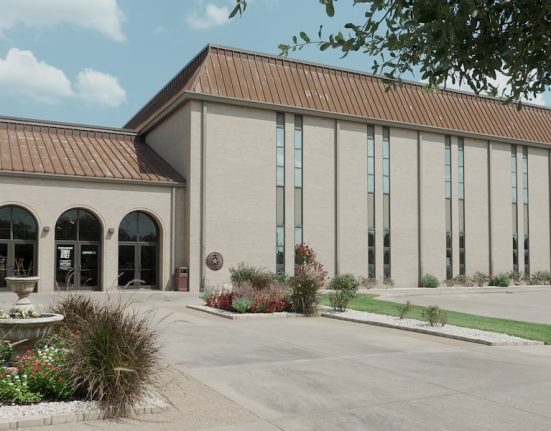Rental properties with regulated units, a category encompassing about a million apartments in thousands of city buildings, have been selling in recent months at double-digit losses, especially those sites purchased in the last decade or so.
A main reason for the sharp decline, as pro-landlord groups are quick to point out, is a series of pro-tenant laws passed by the state starting with 2019’s Housing Stability and Tenant Protection Act, which sharply limits how much rents can be raised in regulated units in order to pay for renovations and offset vacancies.
“Good cause” eviction legislation from 2024, which essentially caps rent increases at 10% a year for nonregulated units, among other benefits for tenants, is also hurting the sector, though to a lesser degree, landlords say.
But basic economics may also be to blame. Inflation has jacked up the cost of water, fuel and construction materials that landlords need to operate and maintain apartment buildings. At the same time, inflation has fueled the higher interest rates that have weighed on the loan market since early 2022, making it more difficult and expensive for owners to refinance mortgages backed by apartment buildings.
Getting sites off the books, even at big losses, is often the smartest course, landlords, brokers and appraisers told Crain’s.
“It’s not that anybody really did anything wrong. It’s just the situation they find themselves in,” said Rich Velotta, CEO of Raven Property Advisors, a brokerage that frequently handles apartment building deals. “And, yes, for a lot of people, the situation stinks.”
A decade ago, when the last real estate cycle was hitting its peak, buildings with rent-stabilized units were trading for up to 15 times their rent rolls. Today they sell for about six times their revenues, Velotta said.
But he and others pointed out that residential sites with mostly free-market units, which can fetch the rents that are setting records across the city, are commanding far higher sale prices.
So if landlords have the financial resources to hang in for the long haul and don’t plan to offload their buildings quickly, as some buyers now appear to be doing, then robust unregulated rents may very well come their way down the road, they add.
Below is a look at some examples of how the investment market for apartment buildings has been playing out.
*********
4002-4004 Carpenter Ave., Bronx
The Related Cos., investing city pension money in the wake of 2012’s Superstorm Sandy, snapped up rent-stabilized sites across the outer boroughs for years. But the megadeveloper seems to have come up short in plans to boost rents at the properties, according to sources familiar with the company’s thinking, and began unloading many of the buildings at a brisk pace and with hefty discounts a few years back.
Among the most recent to trade were No. 4002, a 5-story, 50-unit site near Woodlawn Cemetery in the Wakefield neighborhood, and three others on the street, Nos. 4014-4016, 4128-4130 and 4138-4140, plus nearby 3830 Bronx Blvd. Collectively, they sold in April for $18.2 million, 55% less than the savvy and well-capitalized developer had paid for them. A fund linked to Related paid a total of $40.8 million for the five buildings in a series of deals in 2015 and 2016, based on the city register.
The portfolio’s buyer, Moe Greenzweig, told Crain’s last month that he has no plans to remove the units from the rent-stabilization program. He added in a follow-up conversation that he is eyeing other multifamily properties around the city that are being unloaded by other developers for similar reasons but declined to be specific. Stabilized rents currently average about $1,500 a month citywide.
476 W. 165th St., Washington Heights
In 2018 Kahen Properties, whose principals include Majid Kahen and his son Alex, acquired a group of prewar rental properties in Washington Heights for $22.1 million, according to the city register. In addition to No. 476, a five-floor, 54-unit property, the Kahens snapped up 503 W. 164th St., 524 W. 162nd St. and 2153 Amsterdam Ave. But seven years later the Kahens parted with the buildings. The real estate firm offloaded all four sites in mid-April to Elysee Investment Corp., a landlord active in Miami and Upper Manhattan, for about $9 million, which meant incurring a 60% loss in the process. The Kahens declined to speak about the transaction. But a source familiar with the sale who asked to remain anonymous out of respect for the Kahens’ privacy called the one-two punch of pro-tenant reforms and steep loan costs a “perfect storm.”
“There is a lot of pain in the market,” the source said, “and landlords don’t always have the resources to keep buildings afloat.”
Kahen Properties’ other holdings include the Adele, a 12-story luxury building at 310 E. Second St. at Avenue D in the East Village that was developed in 2014 by the firm. Its 135 units include 30 that are set aside at below-market-rate rents in exchange for favorable zoning changes as part of an “inclusionary” program.
237 11th St., Gowanus
Rent-stabilized units, which account for about 1 million of New York’s more than 2 million apartments, aren’t just found in tenement-style prewar walkups. Indeed, buildings that have enjoyed property tax breaks or regulatory benefits often have them too. And by extension, some values of higher-end properties also appear to have sunk.
An example is this 12-story site developed by Adam America Real Estate in 2017. Its 105 studios to three-bedrooms include 21 rent-stabilized units, a condition of the Fourth Avenue site’s 421-a property tax exemption status. Trinity Place Holdings, which did not respond to a request for comment by press time, purchased the red-brick tower from Adam America in 2018 for $81.2 million, the register shows. But despite being a relatively new tower equipped with amenities such as a roof deck, a bike room and a gym, No. 237 sold at a loss when Trinity unloaded it this year.
Bluestone Investors and Shel Capital purchased the building for $68.5 million, records show, or 16% less than Trinity paid. In April a market-rate one-bedroom leased there for $3,700 a month, based on StreetEasy data. The affordable units, meanwhile, will be stabilized for a total of 35 years. In a preliminary vote at the end of April, the Rent Guidelines Board backed increasing rents on one-year leases by up to 4.75% and on two-year leases by as much as 7.75% , though the changes, which would take effect in October, won’t be finalized till June.
120-125 Riverside Drive, Upper West Side
This elegant Beaux-Arts sites at West 84th Street were purchased in 2013 by a team of Thor Equities and the landlord known today as BGO for $85 million. At the time executives discussed plans to renovate the 50 or so nonregulated apartments in the 95-unit, two-building complex. It’s unclear if the landlords later tried to turn their attention to the regulated units. But in 2024, in a sort of early canary-in-the-coalmine moment for the multifamily sector, the owners dumped the prewar properties on a well-kept block across from Riverside Park for $31 million, or a 64% decline.
Currently owned by a partnership of Amir Shriki’s Aya Acquisitions, which is known for its coliving investments, and Tal Seder’s Sabal Investment Holdings, Nos. 120 and 125 may have found a workaround that eluded the previous landlords. The buildings now have more than 150 apartments, up from 95, presumably from carving up the original larger ones. And in April a three-bedroom, two-bath unit was asking a sizable $10,000 a month.
Since the new owners got the sites at a steep discount, they may also have an unusual amount of breathing room. Along the same lines, when the rent-stabilized portion of multifamily buildings falls below 50%, demand for the sites tends to rise, analysts say. “Major metropolitan markets like New York City are typically steady performers,” Seder told Crain’s last year in justifying his decision to buy.
476 Bergen St., Park Slope
On the flip side, multifamily buildings packed with market-rate apartments continue to sell well. It also helps when a seller has a low “basis,” or that a site was invested in so long ago or at such a favorable rate that there’s nowhere to go but up. An example may be January’s $103 million sale of a 40% chunk of the portfolio belonging to the Pintchik family, which was assembled starting in the mid-20th century by Nathan Pintchik, the owner of a longtime and same-named hardware store at No. 476.
All told, the deal involved 26 buildings encompassing 28 storefronts and 84 apartments. Specific sites that traded included 458 Bergen, a 4-story, three-unit, mixed-use offering that went for $3.3 million, and 480 Bergen, a 4-story, five-apartment site that sold for $4.2 million. The Pintchiks bought them decades ago, the register shows, but for unknown amounts. The buyer, Michael and Edward Ostad’s firm, Flatiron Realty, is expected to keep the sites largely as is.
Raven broker Velotta, whose team repped both sides of the transaction, pointed out that 95% of all the apartments in the deal were out of the rent-stabilization program. “The buildings have been part of generational family ownership, so opportunities like this for a purchaser are truly once in a lifetime,” Velotta previously told Crain’s.






